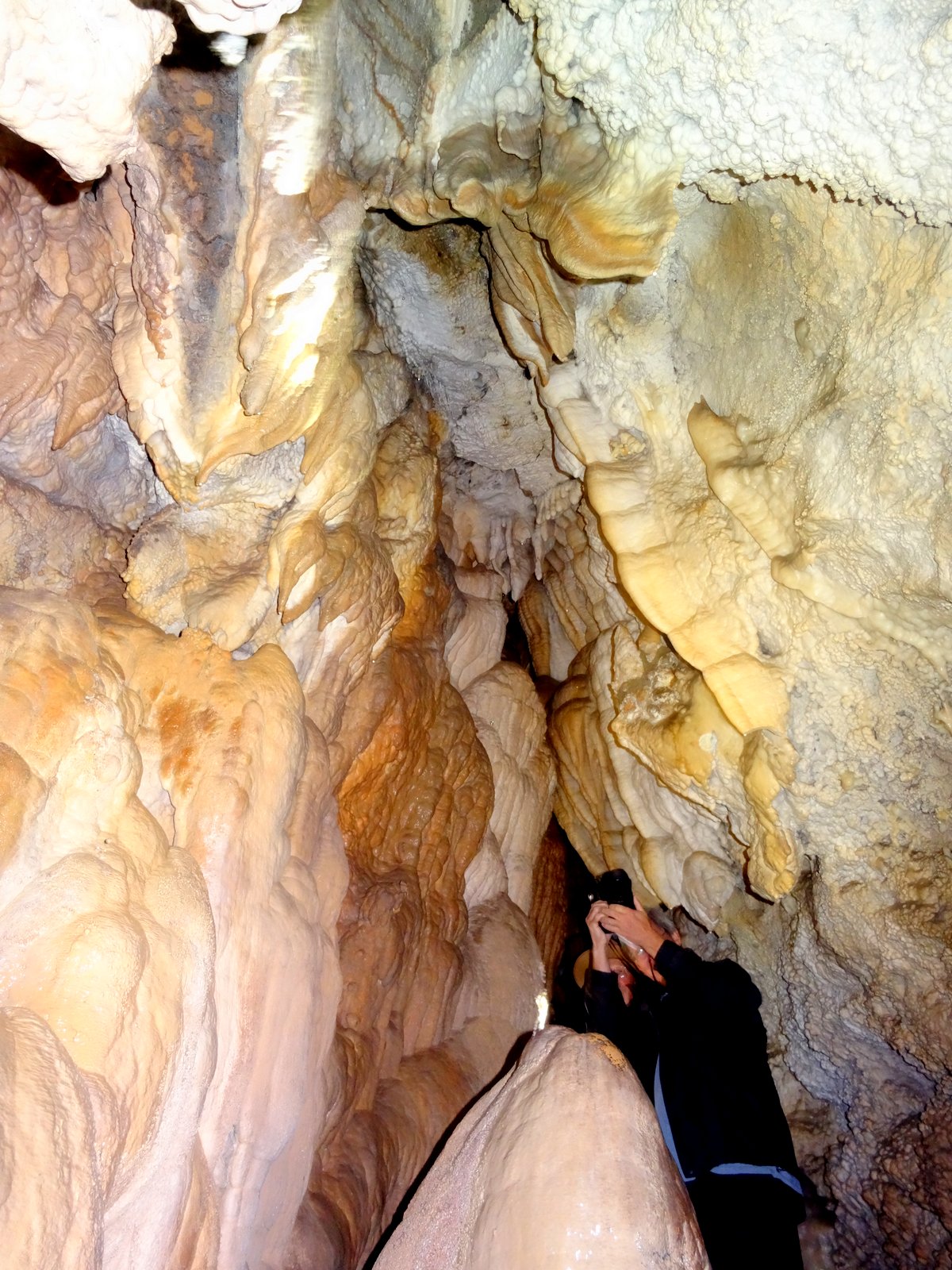I'm not sure when we became cave people, but anymore, if there is a cave nearby it is a pretty good bet we will visit. Timpanogos Cave National Monument was very well liked in reviews with more than 70,000 visitors per year. The new wrinkle for us was the 1.5-mile hike to get to the cave, which included a 1,100-foot elevation gain.
The cave was less than 30 miles from our campsite near Provo, UT which made an 8:30 start time a reasonable option. As it turned out, that earlier start was better because it was cooler and, maybe, more importantly, school groups started much later.
The early morning sun streaming through the valley gave us plenty of reason to stop for pictures of the canyon (as well as the opportunity to catch our breath). We were passed by a lot of people who seemed to be in a hurry but found out they were part of the daily group who use the trail for exercise.
At the end of the American Fork Canyon, we could see the expanding cities of the Utah Valley.
You can see part of the trail we just traversed zigzagging down the hill below...
...and our goal not too much further up the mountain.
I wish I could hug whoever thought this was a good idea! A restroom at the top!
I watched so many highly fit hikers touch the stone and then turn and start their decent that I asked the ranger how many a day made the trek. She told me it was several hundred on a good day.
Our tour was supposed to start at 10:00, but since everyone was ready earlier we started at 9:45. There were only five of us in our group including our Ranger, Mac, and two other guys named Mike (although one went by Mick to avoid confusion). The small group worked well in the close quarters and probably helped everyone to be less shy about asking questions.
We learned there were actually three separate caves that have been joined by excavated tunnels. Our half mile trip through the 45 degree F caves was the tightest tour we have ever taken. Ducking to avoid hitting your head was a must, but many places felt a little like a limbo we were so low.
Ranger Mac held a flashlight behind a formation to show how translucent the calcite was.
In the upper left corner, someone broke a stalactite (many moons ago) and you can see the rings left behind. Each ring represents thousands of years and a slight change in ground conditions to alter the color a bit.
Flash photography was allowed which makes it look well lit... it was not! I used a flash on every picture, David went without
The cave is known for its huge quantity of helictites - strange cave formations that shoot off in all directions. Mac said they were not sure how they were formed but the prevailing theory involved capillary action in hollow soda strawlike structures.
Helictites defy gravity and defy a clear understanding of how they manage that feat. The spastic spikes are usually only about 2 or 3 inches long.
The "Heart of Timpanogos" cave was a large, luminous looking flowstone that was maybe three feet in diameter surrounded by helictites.
"Heart of Timpanogos"
Below was the formation named "the salt and pepper shakers". They were right next to the pathway within easy reach. Mac told us they were broken off and stolen. The thief was eventually caught and the shakers were epoxied back into place (you can see the crack around the base of the closest one).
Beautiful cave bacon! We learned that - with color variations, it's "cave bacon" without it is "cave drapery".
Mac was a wealth of information and said he was somewhat of a talker. He started us 15 minutes early and we ran about 5 minutes beyond the normal tour ending time, giving us the "extended tour" which we all thoroughly enjoyed.
The trip back to the car was certainly a lot less effort going downhill. After more than an hour at 45 degrees, we emerged to a clear day with temps in the mid-70's. When we encountered sunny spots, it was nice to pause for the additional warmth.
The Alpine Loop was an extremely narrow road, which was probably the reason there were so few cars. We did not identify the type of tree that provided the reds and golds on the hills, but they gave a little preview of the fall color to come.






























No comments:
Post a Comment